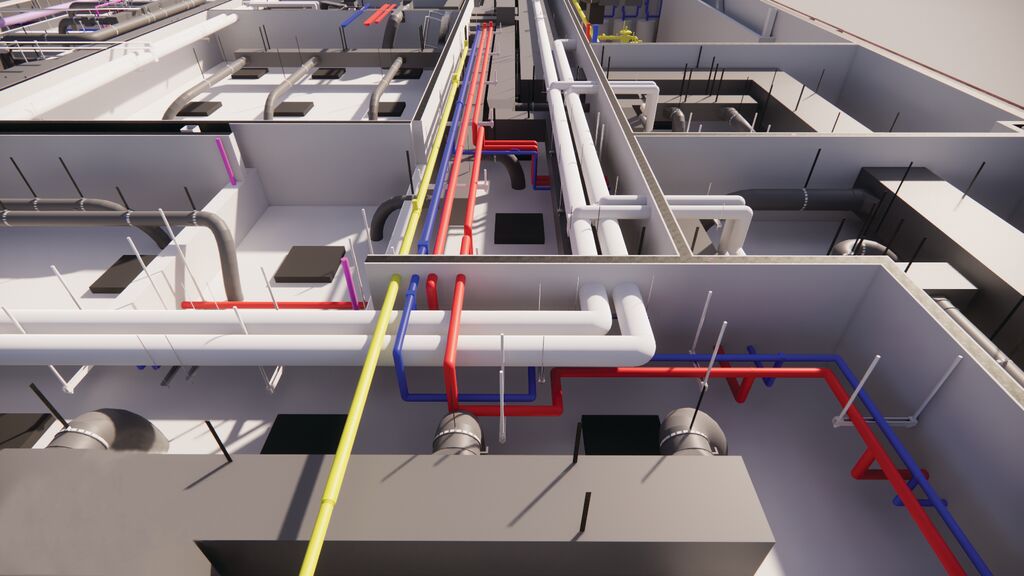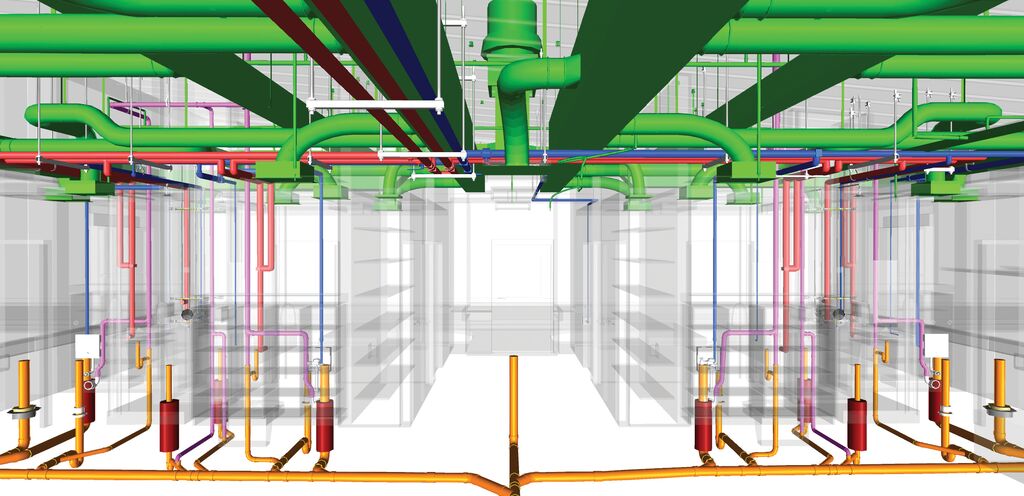BIM, which stands for “building information modeling” is becoming the fastest-growing innovation for managing commercial construction projects. From adding greater efficiencies and productivity to reducing product waste and employee resources waste, BIM is providing benefits for everyone in the design and construction chain — from engineers to project managers to installing contractors.

BIM defined
So what exactly is BIM? Simply put, BIM is a collaborative process. It incorporates teams, technologies, and tools to generate and manage digital assets that represent the physical space of a building to be renovated or newly constructed from the ground up.
Engineers are able to design a building holistically with improved visualization based on higher-quality 3D models generated from the BIM process. Contractors are then able to gain greater efficiencies and productivity during the installation process because issues and conflicts have already been addressed before construction even begins.
BIM Services departments
With this growing trend, companies are seeing the bottom-line benefits of BIM and are now creating their own BIM Services departments. These teams are typically led by a vice president or director and include project managers and business development managers that work one-on-one with clients to provide everything from modeling and coordination, laser scanning, BIM coordination management, BIM training, onsite collaboration, template development, and workflow optimization.
For modeling and coordination, a BIM Services department can provide hanger layouts and structural supports, in addition to spooling and fabrication detailing along with shop, install, and as-built drawings. Some BIM Services teams can even offer laser scanning services, which can include everything from scanning of existing buildings for renovation, scanning completed projects for documentation, and scan-to-BIM services.

How BIM supports installing contractors
By utilizing BIM or partnering with a BIM Services provider, it can increase efficiencies in workflows to help identify issues early on in a project to maximize productivity and minimize waste.
For example, a company can leverage 3D models to validate designs from the onset of design to improve overall project execution and collaboration. This leads to reduced design errors, resulting in higher design accuracy, which saves time and money by reducing rework and change orders.
Accurate and well-coordinated designs also lead to improved job costing through more accurate quantities and estimates, resulting in reduced job-site waste.
Contractors can also gain more precise site logistics by leveraging accurate models to create model-based schedules or sequences. Additionally, look-ahead plans, work-in-progress models, materials planning, equipment and rigging locations, site traffic patterns and controls, and even location-based schedules can all be derived from well-coordinated 3D models to optimize daily job-site activities.

Choosing a BIM Services provider
What is true with real estate is also true with a BIM Services provider: it’s all about location. Some BIM Services companies are located overseas, so the opportunity to have live interaction or even in-person collaboration is very challenging or impossible. Be sure to go with a BIM Services provider located in your region, or at least in your country, so collaboration can happen in real time.
It is also important that the BIM Services team has knowledgeable experience with the codes and standards in your jurisdiction as well as the construction practices in your area. Certain commercial projects, like hospitals, may have specific construction methods that must be adhered to for code. Make sure the BIM Services team you’re partnering with knows these important details.
Additionally, it’s beneficial to work with a team that has affiliations with industry organizations such as ASPE, ASHRAE, and MCAA, to ensure they’re up-to-date on the most current trends and information in the industry.
Finally, it’s important to consider cost when it comes to choosing a BIM Services provider. It’s true what they say: you get what you pay for. So, when researching providers, consider the experience of the team and the support they can provide when weighing how much you want to pay for these services.
Because BIM is a relatively new concept to the construction industry, experience is in short supply. That said, look to these providers for training for your staff. It’s a great way to add value to your company and provide future projects with greater efficiencies and productivity.
 Kim Bliss is the technical and marketing content manager at Uponor. She can be reached at kim.bliss@uponor.com.
Kim Bliss is the technical and marketing content manager at Uponor. She can be reached at kim.bliss@uponor.com.




Join the conversation: